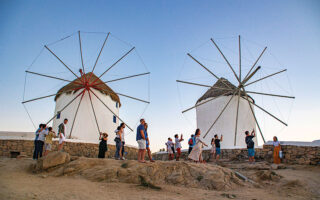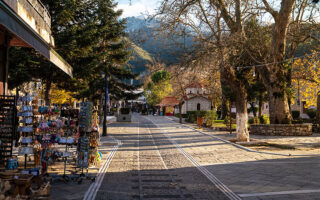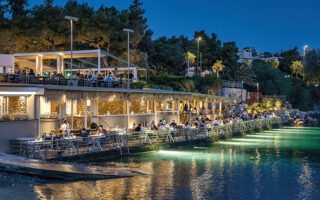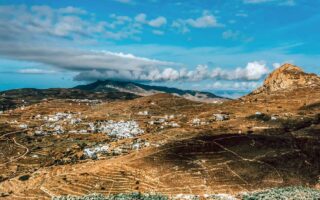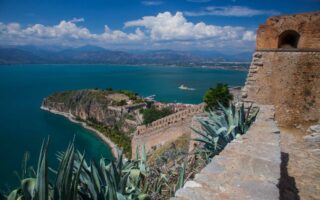Paros: An island of simple pleasures
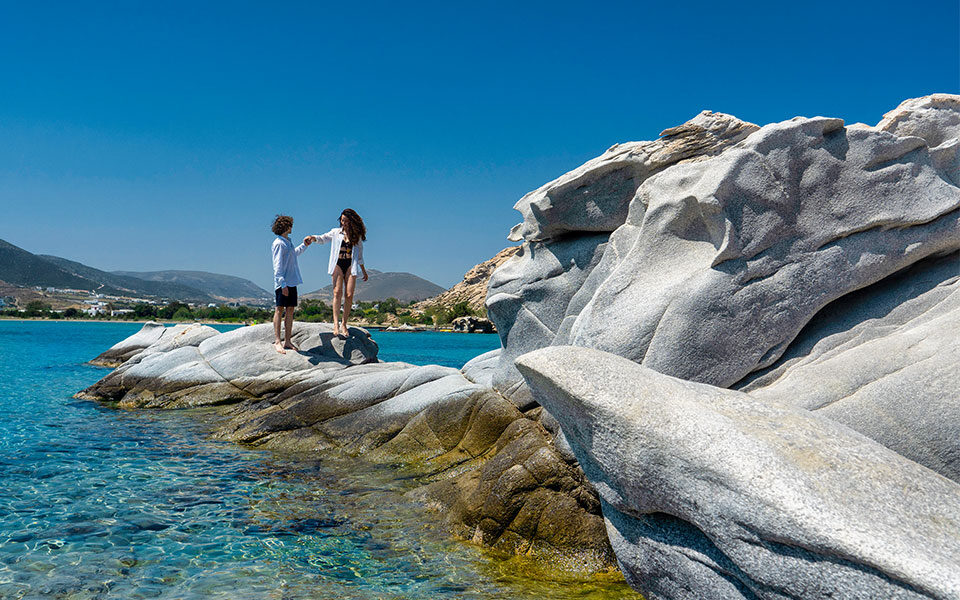
Motor traffic on Parikia’s busiest street, the one connecting it with Naousa, has been steadily increasing over the years. Since the 1960s, these two towns have been the island’s tourist centers. Back then, Paros was just coming onto the tourism scene, but more recently it has become a more sophisticated destination, with the opening of many five-star hotels and with restaurants moving operations here for the summer from their Michelin-starred establishments in Athens.
In the past, the mention of Paros brought to mind classic Greek summer island images: the characteristic whitewashed houses, the windmills, and the picturesque fish tavernas on sandy beaches, combined to make the island an ideal destination for visitors looking not necessarily for luxury, but for the quintessential Cycladic setting. Today, with an amazing variety of activities, accommodations and experiences on offer at prices ranging from affordable to absurd, it’s clear that Paros has become more versatile.
Families with children will appreciate the clean, shallow beaches; those in search of adventure will revel in the water sports. Party-goers will enjoy the nightlife in Parikia and Naousa, while those seeking peace and tranquility will undoubtedly venture into the hinterland and to the quieter beaches in the south. Travelers with a taste for luxury and fine dining will not be disappointed, either – Paros truly has something for everyone.
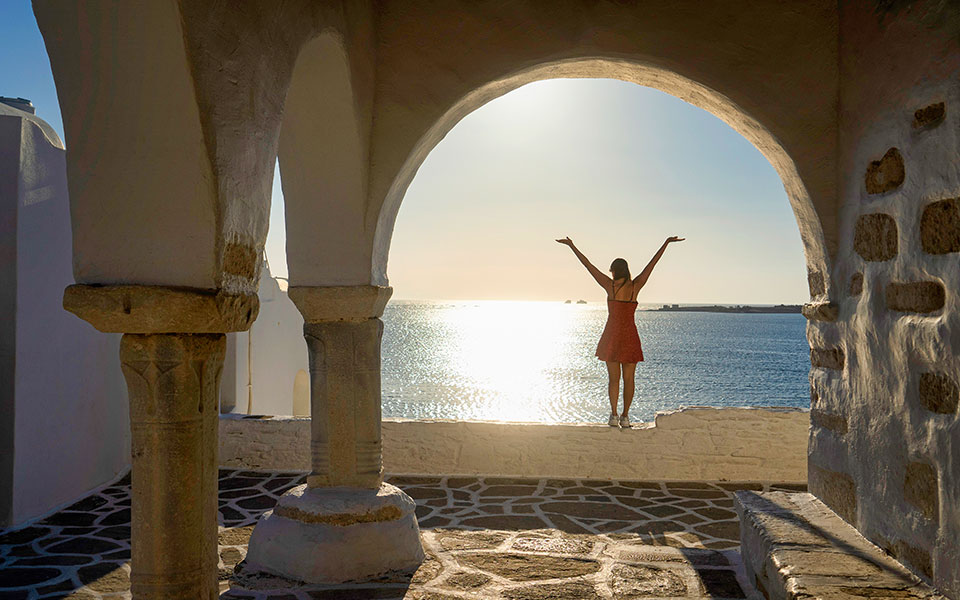
A COSMOPOLITAN FISHING VILLAGE
Naousa is a fishing village in the north of the island with a large sheltered bay and the ruins of a small Venetian fort; it’s long been a key destination for those traveling around the Aegean by boat. By the 1980s, yacht tourism had brought with it a more cosmopolitan air, and even though the kafeneia (traditional coffee shops) still served octopus, olives, and gouna, locally-caught sundried mackerel, within a few years, the little port village was filled with restaurants serving lobster spaghetti and other high-end seafood, and the settlement’s alleyways were flooded with international visitors.
Today, these restaurants are frequented by business magnates, Hollywood A-listers, and other VIPs visiting the island. The area northwest of Naousa, however, just beyond Kolymbithres Beach, presents a completely different image: a remote peninsula that’s home to the Environmental and Cultural Park of Paros. At the start of the park, you’ll find a boatyard and the Monastery of St. Ioannis Detis. Leave the car at the Monastiri Beach parking lot and take to the park’s footpaths, which lead past coves and rock formations all the way to the lighthouse at Korakas Cape.
THE WILD, WILD EAST
Despite its appeal to tourists, there are still plenty of places on Paros that remain relatively untouched, almost as they were a few decades ago. Tourism-related development over the last 50 years has been rather uneven, especially when comparing Parikia and Naousa with the eastern part of the island, which didn’t get electricity until the 1960s, and paved roads until the 1980s. At that time, the main professions of the villagers in this part of the island and in the hinterland were farming and stock breeding. Today, in the area from Abelas to Piso Livadi you’ll see agricultural fields, farms and dirt roads, as well as beaches without beach bars. Many farming communities may indeed be surrounded by luxurious rental villas, but a sense of the traditional Cyclades is still very much intact in this part of the island, as it is to varying degrees in the villages of Kostos, Lefkes, Prodromos, Marmara and Marpissa.
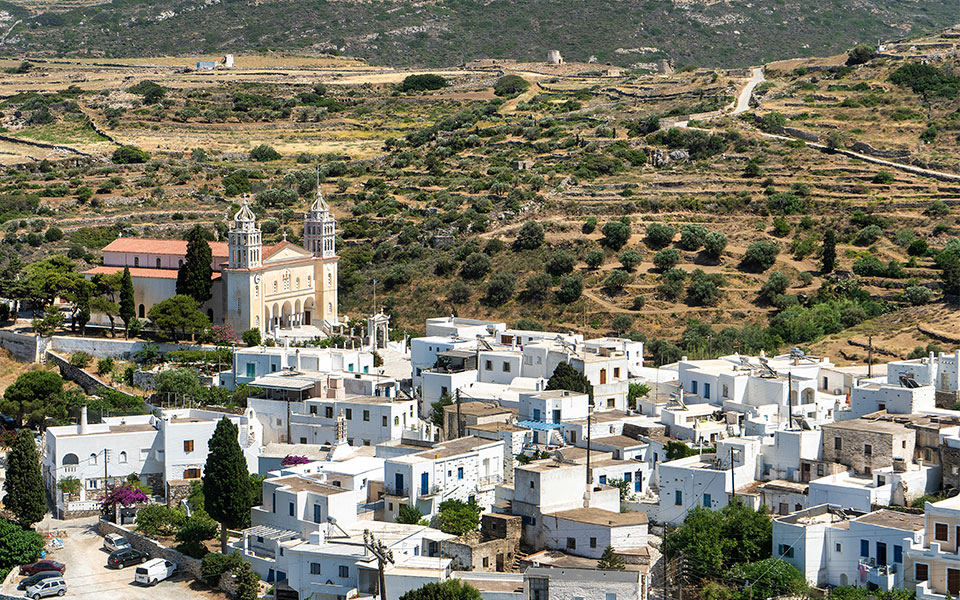
EXPLORING THE HINTERLAND
On the main pedestrianized street in Lefkes, you’ll run into visitors from a number of different countries, some are trying to navigate a maze of alleyways via GPS and others simply follow the crowd. And yet, in some magical way, it seems everyone always ends up at village kafeneio near the Church of Aghia Triada. The view is simply enchanting from here. It’s definitely worth heading up to Aghii Pantes, a small chapel above Lefkes and the highest point on Paros, with stunning views. It is also worth following the Byzantine Trail from Lefkes to Prodromos, the famed footpath that connects the two villages. At Marmara, near Prodromos, the windmill in the center of the village has been converted into a residence. From here, it’s a five minutes drive to sandy Kalogeros Beach.
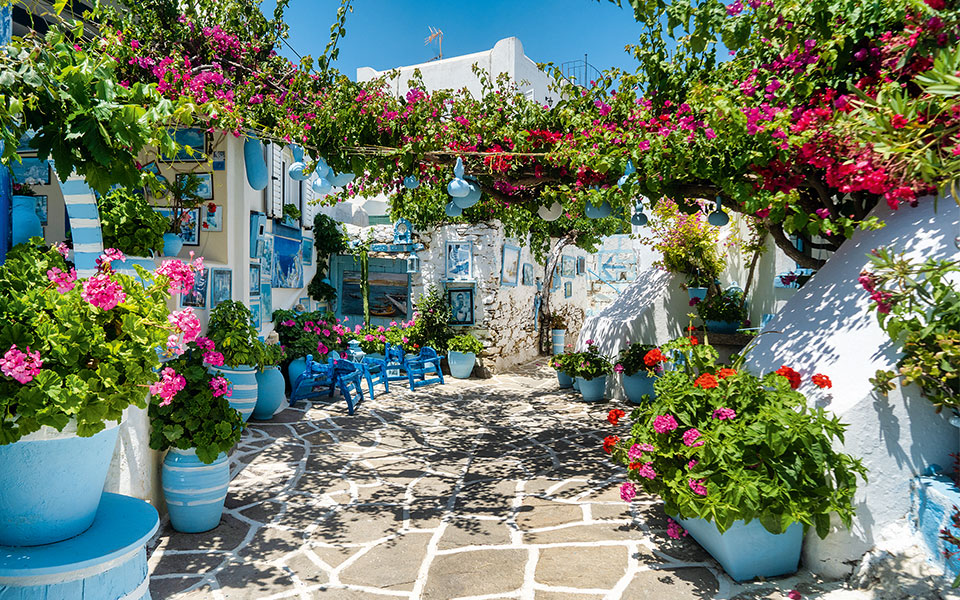
Marpissa, with its windmills and narrow, labyrinthine alleyways, is bewitching. The village resembles an open-air museum of architecture, with many beautifully restored houses, including former farmhouses that have been renovated but retain their traditional character. Only one taverna operates in the center of the village; the hotels and a few shops are scattered around the settlement. Locals choose to preserve the residential character of the village and have refused to allow large-scale developments, a fact that undoubtedly adds to the village’s charm. Walking around Marpissa’s narrow streets will take you under stone archways and past dozens of churches. The Sculpture Museum of Marpissa “Nikos Perantinos” and the Folklore Museum, which operates with the assistance of the local Women’s Association, are both here, as is the Ecclesiastical Museum, next to the Church of the Metamorphosis of our Savior Jesus Christ. On display are post-Byzantine icons sourced from chapels in the area. A pink courtyard door has recently become a village landmark, too, mostly thanks to the number of selfies tourists have taken in front of it and posted online.
On the summit of Kefalos, a hill just outside Marpissa, stands the Monastery of Aghios Antonios, offering uninterrupted views of the island’s interior, of the sea and of the island of Naxos in the distance. The southwestern parts of the island from Pounta to Dryos are home to a number of beaches and small settlements. There are fewer crowds here than in Naousa or Parikia.
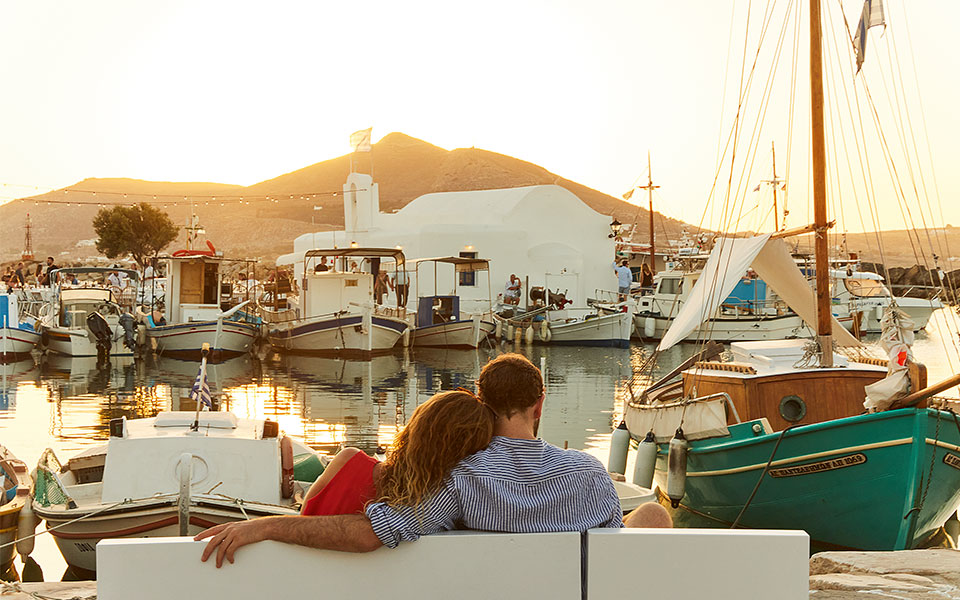
ROUTES IN MARPISSA
The traditional settlement of Marpissa appears to be experiencing tourist development at a more manageable pace than other areas of the island. Locals and foreign volunteers have, for the past 12 years, found a way to celebrate this achievement, and the traditions of the island in general, putting on the “Routes in Marpissa” festival.
This year, the three-day festival, with exhibitions, activities and workshops, will run from August 26-28 (stimarpissa.gr). The festival has also been instrumental in preserving local knowledge; festival volunteers have undertaken important local record-keeping regarding the architecture, history, people and daily life in Marpissa, which you can see online at blueheritage.gr.
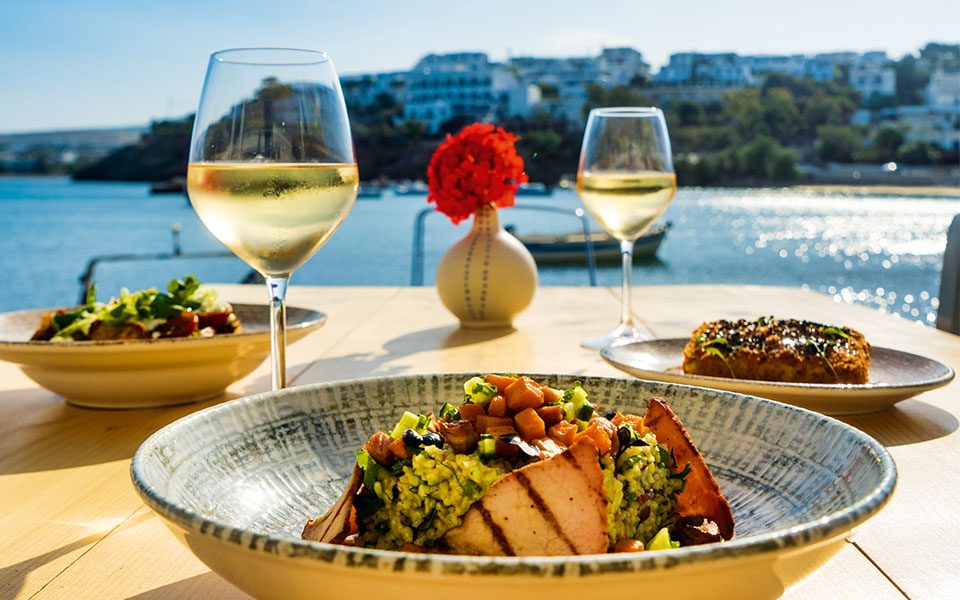
BEACHES
The island is blessed with an abundance of sandy beaches with clear, crystalline and mostly shallow waters, ideal for families with young children. Several feature beach bars that only occupy designated areas, leaving plenty of room for those who just want to spread their towels on the sand.
If you’re looking for a party atmosphere, head to the legendary bar at Punda Beach. In the south, you’ll find Farangas Beach, also with a beach bar; in the north is Monastiri, which is particularly shallow, with many small bays and rocks on either side. Near Parikia, the best beach is Krios; the Marcelo Beach Bar operates on its nortwestern edge. One of the most famous beaches is Hrisi Akti on the southeastern coast, a favorite of surfers and those seeking to try different water sports.
Kolymbithres Beach is just as popular; its smooth flat rocks create perfect natural diving boards. The beaches of Santa Maria and Little Santa Maria in the north are fully serviced. One of the most beautiful beaches on the island is Lolantonis in the south, with a discreet beach bar tucked away on its western flank. If you prefer unserviced beaches, then head to Lageri in the north, Kalogeros in the east or Makria Miti in the south.
This article first appeared in Greece Is (www.greece-is.com), a Kathimerini publishing initiative.
